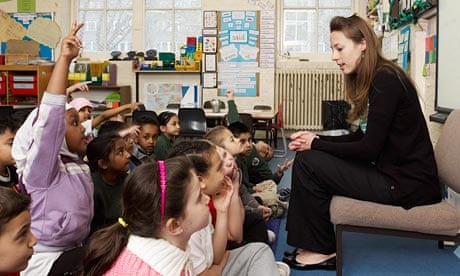What makes a brilliant teacher? For me, it was someone who told funny stories. Like sardonic, moustached Scouser Mr Fleet, who punctuated our economics classes with witty anecdotes about his wife's moaning, the shame of owning a Vauxhall Astra and – repeatedly and ruefully – how he once met Jeremy Isaacs ("We got on famously, I should have pumped him for a job"). Or a mentoring type like English teacher Mr Johnson, who loaned me copies of Private Eye and A Confederacy of Dunces – and with that may have had an influence on my future career. Or fearsome eccentrics like Mr Powell, a maths-legend-in-his-own-classroom, who scraped his fingernails down the blackboard to get our attention, brandished a yard ruler like a rapier and, with hindsight, was what one might call a queen of the acerbic put-down. These were my favourite teachers, their classes became my favourite subjects and brought me my best grades. Later, at A-level, my maths teacher was a bully, so my love of algebra evaporated and my marks suffered.
Aside from the latter, these teachers were probably what you could call "natural born teachers", people who possess a set of talents and skills that are ideally suited to their profession. They made it look easy and they probably didn't realise how good they were. But naturals are rare, exotic creatures and the average secondary school can't survive on the gifted alone. Moreover, compared with 20 years ago, society's expectations of our education system and its teachers have risen, and our scrutiny of the system is forensic. There are league tables, Ofsted reports, academies, websites such as ratemyteachers.com and a drive to send 50% of students to university.
Perhaps because of these pressures, the modern British teacher is someone who is constantly reflecting on his or her own practice, finessing their skills and trying new ideas. Many schools employ "advanced skills teachers", whose primary responsibility is to introduce new thinking and techniques learnt from their training, and from spending time studying other schools. Teachers aim to produce lifelong learners and you might say the teaching itself is a lifelong learning process.
The importance of the teacher was underlined in a study by Professor John Hattie of the University of Auckland. His meta-study synthesised the findings of more than 50,000 other studies, representing more than 83 million students, and concluded that: "Excellence in teaching is the single most powerful influence on achievement." That is, it outweighs other factors such as class size, school buildings, school management and the effects of a student's peers. From Hattie's research, it has been interpreted that an expert teacher's feedback and instructional quality are each individually capable of advancing a learner's achievement by a year in academic terms.
So how we train and maintain teachers and, indeed, what exactly makes a teacher brilliant are questions that are at the forefront of the minds of educationalists, politicians and teachers themselves. In America, a teacher named Doug Lemov recently published a book called Teach Like a Champion which has won considerable praise from teaching professionals. And, after he was featured in the New York Times, Lemov received invitations to set up training colleges – including one enquiry from Queen Rania of Jordan. The book is now being published in the UK and is expected to cause a stir in staff rooms across the country. "I'm stunned by the reach of the book and inspired by the positive reaction," Lemov tells me, on the phone from his office in New York.
Lemov is a managing director at Uncommon Schools, a network of 14 schools based mainly in urban New York and New Jersey. Uncommon Schools are "charter schools" – independently run but state funded, which in return for being freed from some rules and regulations have to deliver on specific aims – in Uncommon's case to boost the achievement of low-income students and prepare them to graduate from college.
Teach Like a Champion is, in effect, an Uncommon Schools teaching manual covering the principles Lemov and his colleagues have been employing in the network's urban schools. He sought out the teachers who produced the best results, observed what it was that they were doing and, over the course of five years, distilled the results into the 49 techniques that make up the book. "I'm inspired by great teachers; it's the hardest job in the world, and it's also the most important," he says. "Every time I walk into a great teacher's classroom I'm humbled by the skill that they have, and feel like it needs to be shared."
Paramount in Lemov's "taxonomy" is the principle that a teacher must capture the student's attention and get them to follow instructions. Technique One is called "No opt out" – its aim is to banish "I don't know" as a response from the classroom. The teacher asks Jason for the square root of 81. Jason stares blankly. The teacher asks Daniel, who gives the correct answer – nine. The teacher then turns back to Jason and asks him for the correct answer. Technique Two is called "Right is right" – it states that the teacher must only accept fully correct answers. For example, if a student is asked how the Capulets and Montagues get along at the beginning of Romeo and Juliet and replies "Not very well," the teacher should require further detail before announcing that the answer is correct. Many teachers will "round up" the answer and say: "Right, they don't get on very well, they've been feuding for generations." Lemov states the teacher must not complete the student's answer because that means the student now believes they know something when they don't, and moreover it crowds out the student's own efforts to get to the correct answer. Technique Three is called "Stretch": it means don't stop at the right answer, ask follow-up questions, ask how, ask why, ask for evidence – to extend the students' knowledge. And so on for another 46 techniques.
Paul Meredith, a science teacher at a secondary school in Brighton, has been reading Teach Like a Champion and has invited The Observer into his classroom to watch him use some of the techniques with this class of 12- to 13-year-olds. The kids file in, noisily taking their places on their stools. Meredith stands chest out, like a sergeant major at the front of the class, staring each student into silence, one by one, until they are looking forwards at him. ("That's one of my own techniques, I've got them to quieten down, but I haven't fallen out with them because I haven't shouted at them," he tells me later.)
Today's lesson is about convection. The lab assistant has rigged up a square-shaped tube filled with water. Paul dissolves some potassium permanganate in the water and the class watches the purple wisps of chemical being moved around the tube by heat coming from a Bunsen burner. He then starts questioning the class, using a combination of "Right is right", "No opt out" and a technique called "Cold calling" – sometimes called "No hands up" in UK schools – where the teacher randomly chooses a child to answer the question, forcing the whole class to think and prepare an answer rather than just the kids with their arms up.
Meredith: "Katie, what is heat?"
Katie: "It's a form of energy."
Meredith: "Good, but could we be more specific. Lucy?"
Lucy: "Is it something to do with particles?"
Ocean: "Is it how fast the particles are moving?"
Meredith (trying a different tack): "Natalie, what's the difference between heat and temperature?"
Natalie: "Heat is a form of energy…"
Meredith: "David?"
David: "Heat is energy and temperature is how you measure it."
Meredith: "Explain that to Natalie."
David (turning to Natalie): "Heat is energy and temperature is how you measure it."
Meredith: "So Natalie, what is the difference between heat and temperature?"
Natalie: "Heat is energy and temperature is how you measure it."
And it goes on. Each time a pupil doesn't know the correct answer, a pupil who does will tell them, and he or she then has to repeat the correct answer. While on paper it may read like the students are simply being asked to repeat answers, Lemov argues that his "No opt out" technique "eliminates the incentive to not try". Banning saying "I don't know" means the student can't sidestep work, because ultimately they will have to answer the question.
Many incremental answers later they have moved on to explaining why radiators are placed under windows. Ellie explains to Paris: "Convection is when the particles heated by the radiator rise, and cold particles move to fill the space, so the heat moves around the room." It's taken a while, but rather than just recite something from a textbook, or watch a teacher at a whiteboard, they have collectively reasoned themselves to an understanding of the principle of convection. Lemov claims that persistence with this technique will result in indifferent shrugs being replaced by sustained attention and effort as the "behavioural norm" in the classroom.
Back in Meredith's class, you can see this effect. Throughout, the students have remained focused on the discussion, preparing an answer in case they get picked. At the end of the class, when Meredith asks if they have all understood, they say they have. And while some might not be entirely sure of the shared qualities of a Bunsen burner and their home radiators, it's certain that a far greater proportion of the class understood convection than if only the high-ability kids had put up their hands and answered all the questions.
Lemov makes no claims to have originated these techniques, but he feels collating and documenting them fills a space in the teacher's tool kit. "When I started out teaching I would go to workshops and would leave with inspiring messages such as 'have high expectations' and 'teach kids not content'," he recalls. "I'd leave excited and in touch with all the reasons why I wanted to be a teacher, until I went to school the next morning and would have no idea what to do. I wouldn't know what action I should take to demonstrate those raised expectations, or how to make a child who wouldn't sit down, sit down."
Interestingly, Lemov claims that some of the techniques in the book might be "scorned as demeaning" or "too mundane to be worthy of inclusion" and unlikely to be found on American teacher-training programmes. But as the reaction from our selection of teachers shows, all of whom read Teach Like a Champion and offered to try out its techniques in their own classrooms, much of his advice already has a place in teacher training and British schools.

It is reassuring to know that we're not relying on natural born teachers in the UK, and a whole generation of Mr Powells are being built, not born.
Teach Like a Champion: 49 Techniques That Put Students on a Path to College, by Doug Lemov, (Wiley, £19) is out now
Paul Meredith, 36, teaches science at Portslade Community College, a secondary school near Brighton
The nine-month PGCE is never going to prepare you fully for life in the classroom. Your NQT (Newly Qualified Teacher) year is like being hit in the face with a shovel. It's the workload – what's expected of you every day, every lesson.
This school is forward thinking: we're always looking at teaching and learning, we have ASTs (Advanced Skills Teachers) and a stringent peer-observation policy. We exchange resources, too: for instance, a PowerPoint I spent six hours putting together on the astronomer Carl Sagan, I've shared with colleagues – I'm not sure you'd do that in other professions.
The problem I have with Doug Lemov is that it's a very aggressive teaching method. If Ofsted walked into the lessons shown on his DVD they'd say they were unsatisfactory, very passive learning, known as "chalk and talk". The focus on teaching in Britain is "student-centred active learning", more light-bulb moments, the teacher as facilitator – so you set up a task and the pupils solve the problem themselves. One of the reasons we're moving this way is because industry is telling us we are turning out kids who can regurgitate facts and figures, but can't think and problem solve.
We are constantly expected to reflect on our practice; we're observed on Ofsted criteria, and on our own school's criteria.
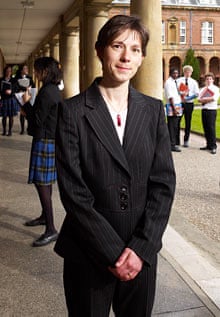
Compared with when I was at school, I'm sometimes flabbergasted by the way we get talked to, but then I'd have never high-fived a teacher in the corridor, and they come and sit with you in the canteen. And I think 90% of classroom management is done in the corridors, eating with the kids, taking time to chat with them.
I'm proud of my students who have achieved well above their predicted target grades. The students behave well in my lessons – I like to think that's because of a human touch. Kids don't want to be taught by monsters.
Delyth Draper, 34, teaches biology at Wellington College, an independent school in Berkshire. She has 14 years' experience
I had an inspirational biology teacher and my passion for the subject came from her. When you left her lessons you wanted to go and find out more. And I think that is the essence of good teaching – you want your students to become lifelong learners.
A good teacher can achieve a lot by building up a rapport with their class, for instance by doing one-to-one work with pupils, and activities outside the classroom. You learn from your peers, too. One colleague gives the pupils Post-it notes, and at the end of the class they leave a question on a Post-it about something they haven't understood, and the following lesson the teacher goes through the points that have been raised.
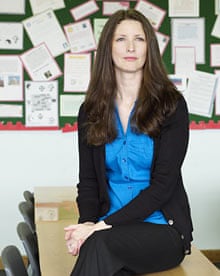
But reading Lemov's book has inspired me. I was teaching my year-10 class reproduction in flowering plants and I thought about what Lemov calls "the hook" to draw them in. So I showed them a clip from David Attenborough's The Private Life of Plants, where the wild wasp orchid mimics being a female wasp to encourage a male to pollinate it. And it has absolutely hooked them in.
I also liked Lemov's "without apology" idea: if you believe the lesson content is boring, it is a self-fulfilling prophecy. As a human biologist I probably find botany less interesting, so I go out of my way to display more enthusiasm. I am also trying to do more checking for understanding; we have mini-boards, so all the students can hold up their answers for me to check.
Lemov's book has reinvigorated what I believe in, and has made me go back to basics a little bit. And I'm going to put some of his phrases on my desk, to help me put them into practice.
Louise Gregory, 35, teaches history and psychology at Highlands School, a mixed comprehensive in Enfield
A good teacher is self-critical. people don't say: "i just wheel my lessons out year after year" – which they probably did when I was at school. Education has become about teaching students skills – which requires many more types of teaching activities. It's not so important that kids learn the date of the Battle of Hastings but rather that they learn skills of analysis and evaluation.
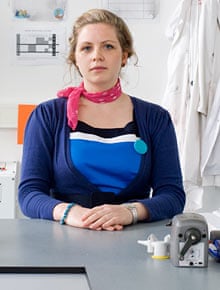
Even if you feel you know your subject, teaching is so much more than having a passion for it – there's a lot more you only learn through years of practice. It takes a long time to master classroom management, though for some people it's easier than for others.
A lot of Lemov's techniques wouldn't be particularly new to British teachers. It is a useful book, but you'd have to execute some of it with a lightness of touch to get away with it – such as his "take a stand" technique, which involves saying things like: "How many think So-and-So is right?" Some teachers would shy away from that to avoid being perceived as humiliating or picking on pupils.
Many of the points he gives are related to what you could call an autocratic style of teaching – constantly asking questions. There are fewer ideas to improve the dynamics of group work – if you were to pick up a British book on modern teaching it would be about how to create a dynamic learning environment. If you stood in front of a class of British schoolkids doing question-and-answer all lesson, you would lose them. It's not the way we teach. After reading this book, my perception is that British teaching is ahead of the game.
Roisin McNeil, 29, teaches chemistry at Peachhaven Community School, a secondary in East Sussex. She is in her NQT year
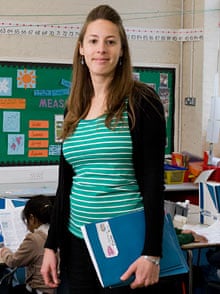
The first few lessons we call "establishment" – establishing yourself and your rules. But my head started spinning when I started dealing with the curriculum, the volume of work I had to plan and assess. One thing which Lemov talks about which you forget early on, especially if you're stressed, is positive behaviour management. The best way to get a badly behaved class to work well is to tell them how good they are: well done for having your book open, your pencil out – even if it's the smallest thing.
What's good about Lemov's book is he's making explicit what is maybe implicit. I've been taught some of these things by other teachers, but they're not written down anywhere. Something I picked up from one of the deputy heads here is what Lemov calls "threshold" – always stand at the door and greet your students as they come in, let them know it's your classroom and gauge what mood they're in.
I have a teaching mentor within the school and we'll discuss what I need to work on and she'll send me to observe someone who is good at that. I've picked up useful things, such as being clear with instruction: short and sharp.
Lemov's book promotes a very teacher-centric model of teaching. Our British model is much more student-centric, what's called active learning, where the kids are discovering things for themselves. When you see kids understanding things, when you see the penny dropping, that's a magical moment. Some kids have low self-esteem because of their background – what is amazing is when they start to do things they didn't believe they could.
Natasha Nair, 30, teaches at Netley Primary School in Camden, London. She has seven years' experience
As a teacher you are monitored and observed quite a bit, but good teachers are always thinking about how they can make it better.
I agree with Lemov's ethos: he believes that every second a child is in the classroom counts, that children should be independent learners, and that we should make them confident to discuss and disagree with their peers and teachers.
His approach differs from what I witnessed in some American classrooms last year on an exchange programme. It was quite old-fashioned, chalk and talk, dictated by textbooks – not only did I think they were bad lessons but they would fail Ofsted criteria. There was no differentiation for lower- and high-ability learners: everyone was doing the same work, which would be an instant fail in the UK.
You can run yourself ragged trying to meet "outstanding" Ofsted criteria – you'd have to be superhuman. If one of my classes each day is at that level, I feel I'm doing well.
You can learn a lot from great teachers. When I was training there was one who was fantastic. Her classes were warm and supportive; her children were happy learners. She was firm yet very gentle. I liked the phrases she used, such as: "I'm going to ask a tricky question now – I wonder who can be a clever cookie to give me that answer." I adopted that and seven years on I still use it a lot. Things like that can't really be taught in college.
Sometimes great teaching comes from the teacher's personality. One teacher I observed was musical: she would make up rhymes and songs to help children remember things – that was her sparkle.
